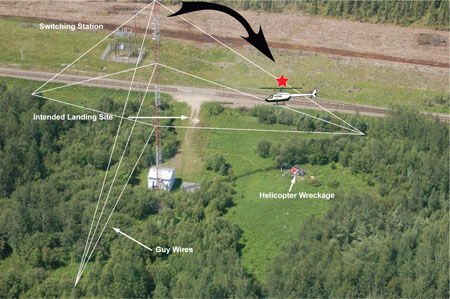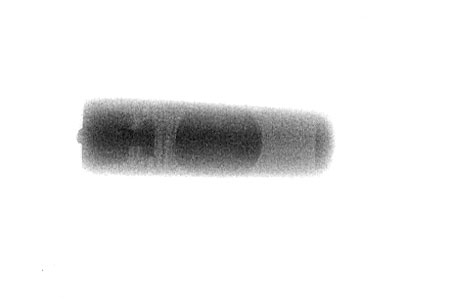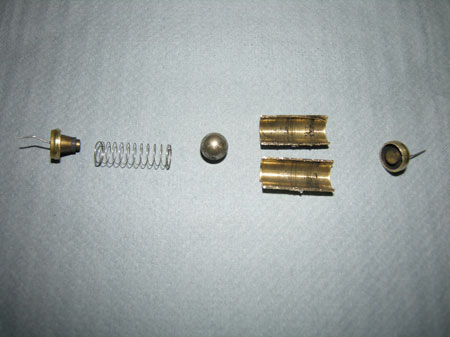Guy-Wire Strike During Landing
Hydro One Networks Inc.
Aerospatiale AS 350 B2 (Helicopter) C-GOHY
Moosonee, Ontario, 26 nm SW
The Transportation Safety Board of Canada (TSB) investigated this occurrence for the purpose of advancing transportation safety. It is not the function of the Board to assign fault or determine civil or criminal liability. This report is not created for use in the context of legal, disciplinary or other proceedings. See Ownership and use of content. Masculine pronouns and position titles may be used to signify all genders to comply with the Canadian Transportation Accident Investigation and Safety Board Act (S.C. 1989, c. 3).
Summary
The Hydro One Networks Inc. Aerospatiale AS 350 B2 helicopter (registration C-GOHY, serial number 2589) was attempting to land at a remote site near Moosonee in northern Ontario. The selected landing area was a driveway near a communications tower, which was supported on three sides by multiple guy wires. The pilot chose to approach the driveway landing area by flying the helicopter sideways while maintaining forward visual contact with the selected landing area. As the helicopter moved sideways, the main rotor blades struck two of the top guy wires at a height of about 100 feet above ground level. The rotor blades were substantially damaged and the helicopter quickly descended and struck the ground in an inverted attitude.
The two passengers, Hydro One employees, were able to extricate themselves, but could not extricate the pilot. One of the passengers knew about, and was able to get access to, a telephone located at the site. He used it to call the air ambulance unit in Moosonee. The air ambulance crew extricated the pilot from the wreckage and then transported the pilot and passengers to a local hospital. There was no fire. The emergency locator transmitter did not activate. One hydro worker received minor injuries. The pilot and the second hydro worker were seriously injured.
Factual information
The weather at the time of the occurrence was as follows: wind from the west at 8 to 10 knots, sky partly cloudy, and temperature approximately 23°C.
The pilot held a valid commercial helicopter licence and a current medical certificate. The pilot was familiar with the type of operation being flown and the area where the intended landing was to take place. The pilot had been off-duty for approximately 15 hours prior to the occurrence and had flown less than three hours the previous day. The occurrence flight was the first flight of the day and it was approximately 40 minutes in duration.
The Aerospatiale AS 350 B2 helicopter had been maintained in accordance with existing regulations and manufacturer's documentation. At the time of the occurrence, there were no mechanical abnormalities reported by the pilot.
The pilot had initially intended to land the helicopter on a wide clearing near the switching station (see Photo 1). While hovering to land, the pilot assessed that the ground was too soft to support the helicopter. The only other suitable area was the driveway near the communications tower. It was more confined with mature brush lining the sides, but wide enough to accommodate the helicopter.
The pilot was occupying the front right control position. As he approached the landing site, he rotated the helicopter such that it was flying in a left sideways manner towards the driveway site. Although this allowed the pilot to maintain forward visual contact with the driveway where the helicopter was to land, his view in the direction of flight was restricted by the cabin structure and the passenger sitting in the left forward seat. Once over the driveway, the intention was to rotate the helicopter until the tail rotor faced the communications tower. As the helicopter was moving closer to the driveway, the main rotor blades struck the guy wires.
The communications tower was approximately 300 feet high, and was supported by guy wires that were attached around the tower at approximately 120 degrees of spacing and at three equidistant points up the height of the tower. The guy wires consisted of steel multi-strands and were approximately one inch in diameter. Each guy wire in Photo 1 consists of two separate wires in close proximity. The helicopter main rotor blades struck the two top guy wires at a height of approximately 100 feet above the ground. The guy wires were pulled from their attachments on the ground but remained attached to the top of the tower.
During the impact sequence, one of the guy wires became entangled with the helicopter and remained entangled even after the helicopter struck the ground. The impact with the ground in an inverted position partially crushed the top of the cabin structure, with the most crush damage in the cockpit area. This trapped the pilot and hampered the evacuation of the two passengers.
The Narco ELT-910 emergency locator transmitter (ELT), serial number 14958, had been installed in the forward cabin orientated in the proper 45-degree downward direction. It had last been inspected in September 2006 and was due to be inspected in September 2007. The ELT was manufactured by Narco in August 1998. It was removed from the wreckage and shipped to the TSB Engineering Laboratory. During the testing, the ELT did not activate when it was subjected to forces that should have triggered the G-switch. It did produce a normal 121.5 MHz signal when it was turned on manually.
The G-switch, part number 2014-1-000, was manufactured by Select Controls Inc. It is a single-axis, ball and spring-type switch, with the ball and spring contained within a casing (see Photos 2 and 3). The ELT is activated when G-forces are sufficient for the ball to compress the spring and touch a contact inside the front of the casing. Examination showed that the ball was seized in the midway position within the casing and had partially compressed the spring. Attempts to shake the ball loose were unsuccessful.
The switch was cut open and found to be contaminated with a black powder substance. Select Controls Inc. is aware that the G-switch may stick due to the deterioration of the gold plating within the casing, which creates a powder residue that prevents the ball from moving full travel. Select Controls Inc. recommends replacing the switch or increasing the switch testing frequency if the ELT has been in service more than five years and replacing the switch after ten years in service.
ACK Technologies Inc., another ELT manufacturer that uses the same Select Controls Inc. G-switch in its model E-01 ELT, has accepted the inspection and replacement recommendations and issued a service bulletin (SB E-01.8) to reflect these recommendations. Narco has not issued a related service bulletin to its customers.
The single-axis, ball and spring-type switch conforms to current specifications, but activation is limited to the forces applied in the axis that the ball can travel. An impact force applied at right angles to the orientation of the switch will not activate the ELT.
Analysis
There were no indications that weather or mechanical abnormalities were involved in this occurrence. The pilot was familiar with the site area and was experienced in the operation of the helicopter. The area selected to land the helicopter, although confined, was suitable for the landing. The pilot's decision to approach the landing site by flying the helicopter sideways to his left restricted his view of the approaching guy wires, significantly increasing the possibility of contact between the main rotors and the wires.
The structural damage to the main rotor blades rendered the helicopter uncontrollable and it became inverted and entangled on one of the wires during its descent to the ground. It is possible that the wire entanglement reduced the forces during ground impact and prevented further structural damage and injuries to the occupants.
The ELT did not activate even though impact forces exceeded the threshold of the G-switch. The type of G-switch used in this ELT was a single-axis, ball and spring-type switch. This type of switch will automatically activate the ELT only if a component of the impact force is in the same direction as the orientation of the switch.
During examination of the switch, black powder residue was found and the switch was seized within its casing; thus electrical contact was never established and the ELT failed to activate. The ELT was properly attached and located in the cockpit of the helicopter as per current regulations, but the accident impact forces were in a direction that may not have activated the G-switch even if it had been serviceable. The failure of the ELT did not affect the rescue of the three injured persons because of the availability of phone service at the communications tower.
The following TSB Engineering Laboratory report was completed:
- LP 069/2007 – Examination of ELT
This report is available from the Transportation Safety Board of Canada upon request.
Finding
Finding as to Causes and Contributing Factors
- The helicopter struck the guy wires supporting the communications tower as a result of being flown in a left sideward direction, which prevented the pilot from viewing the approaching tower guy wires from his position in the right front seat while focused on the somewhat restricted landing area.
Findings as to risk
- The single-axis, ball and spring G-switch in the emergency locator transmitter (ELT) meets current specifications, but it is not effective when the impact forces are at angles that are substantially different to switch orientation.
- The ELT failed to activate on impact as a result of a faulty internal G-switch. The internal parts of the switch are susceptible to deterioration over time and can prevent switch operation and ELT activation.
Safety action
Safety action taken
Transport Canada will contact both Narco and ACK Technologies Inc. to seek their publication of a Component Maintenance Manual amendment that would mirror the Select Controls Inc. recommendation.
This report concludes the Transportation Safety Board's investigation into this occurrence. Consequently, the Board authorized the release of this report on .


